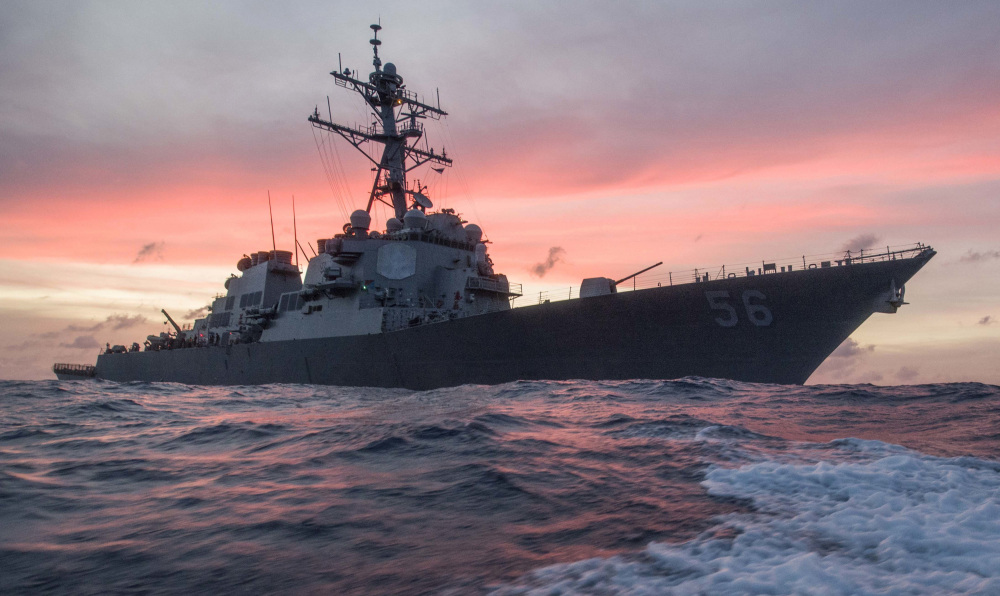For a state-of-the-art U.S. Navy destroyer to collide with a slow-moving tanker ship, there must be multiple failures of operations and personnel. That it has happened twice in two months to the Asia-based 7th Fleet, with the tragic loss of up to 17 lives, suggests broader and deeper maladies in the fleet and perhaps in the Navy more generally.
Following the crash of the USS John S. McCain with an oil tanker near Singapore, which left 10 sailors missing, senior commanders appear to recognize the severity of their problem. Navy Adm. John Richardson quickly ordered an “operational pause” and a fleetwide study of “operational tempo, performance, maintenance, equipment and personnel.”
An initial review by the Navy of the collision of the destroyer USS Fitzgerald off the coast of Japan in June suggested multiple personnel failures. To its credit, the service moved quickly to discipline a dozen sailors, including the two top officers and the top enlisted sailor, even while the investigation of the incident continues. Among other things, the Fitzgerald’s commander was not on the bridge when the crash occurred, though protocol requires the captain’s presence when other ships are passing nearby.
Like the Fitzgerald, the McCain was traveling in a heavily trafficked sea lane in darkness when the collision occurred, making human error more likely. But there is also reason to question whether the 7th Fleet has systemic problems. It has now recorded four major accidents this year.
The fleet, like the Navy at large, is stretched thin. It is charged with challenging Chinese expansion in the South China Sea with “freedom of navigation” patrols and must be prepared for possible confrontation with North Korea. By the Navy’s reckoning, there are simply not enough ships to manage the growing threats in the Pacific, as well as from Russia, Iran and other potential antagonists. The service now commands 277 vessels — less than half the number it had at the end of the Cold War — and concluded last December that it needs 355.
However, the Navy could find it difficult to obtain the $25 billion annually it would cost to expand the fleet. That would amount to 60 percent more than the average amount budgeted for ship construction over the past 30 years. If construction funding remains constant, the Navy will have to settle for 74 fewer new ships than the 254 it wants to buy in the coming 30 years.
As it is, the Navy will be more hard-pressed than ever in the Pacific in the coming months with two of the 7th Fleet’s destroyers out of action. That makes it vital that commanders act quickly to identify and remedy the problems in personnel and operations that have enabled these tragic accidents.
Editorial by The Washington Post
Send questions/comments to the editors.



Success. Please wait for the page to reload. If the page does not reload within 5 seconds, please refresh the page.
Enter your email and password to access comments.
Hi, to comment on stories you must . This profile is in addition to your subscription and website login.
Already have a commenting profile? .
Invalid username/password.
Please check your email to confirm and complete your registration.
Only subscribers are eligible to post comments. Please subscribe or login first for digital access. Here’s why.
Use the form below to reset your password. When you've submitted your account email, we will send an email with a reset code.